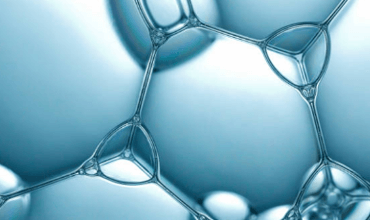PVA film
- PVA as A Viable Membrane
In this work, we report separator membranes from crosslinking of two polymers, such as poly vinyl alcohol (PVA) with an ionic polymer poly(methyl vinyl ether-alt-maleic anhydride) (PMVE-MA). Such interpolymer-networked systems were extensively used for biomedical and desalination applications but they were not examined for their potential use as membranes or separators for batteries.
——ncbi.nlm.nih.gov
- Separator Membrane from Crosslinked PVA and Other Polymer
In this work, we report separator membranes from crosslinking of two polymers, such as poly vinyl alcohol (PVA) with an ionic polymer poly(methyl vinyl ether-alt-maleic anhydride) (PMVE-MA). Such interpolymer-networked systems were extensively used for biomedical and desalination applications but they were not examined for their potential use as membranes or separators for batteries.
——mdpi.com
- A review on polymeric hydrogel membranes for wound dressing applications: PVA-based hydrogel dressings
This review presents the past and current efforts with a brief description on the featured properties of hydrogel membranes fabricated from biopolymers and synthetic ones for wound dressing applications. Many endeavors have been exerted during past ten years for developing new artificial polymeric membranes, which fulfill the demanded conditions for the treatment of skin wounds.
——
- Physicomechanical and antimicrobial characteristics of hydrogel based on poly(vinyl alcohol): Performance improvement via inclusion of chitosan-modified nanoclay
The effect of a chitosan-modified nanoclay (CMNC) on the physical, mechanical, and antimicrobial properties of poly(vinyl alcohol) (PVA) hydrogels prepared by the electron beam irradiation method is reported in comparison with pristine nanoclay (PNC). The X-ray diffraction (XRD) results confirm that the chitosan modification process of nanoclay led to an enhancement in the clay gal- lery spacing.
——
- PVA HYDROGEL
PVA HYDROGEL
——12, United States Patent Muratoglu et al.
- Rapid synthesis of high strength cellulose–poly(vinyl alcohol) (PVA) biocompatible composite films via microwave crosslinking
The present study describes microwave (MW)-assisted rapid synthesis of biocompatible poly(vinyl alcohol) (PVA) compos- ite films that demonstrate synergy between reinforcement and crosslinking. Bacterial cellulose (5% w/w) nanowhiskers (reinforcement) and tartaric acid 35% (w/w) (crosslinker) are incorporated in PVA to prepare crosslinked cellulose–PVA composite films.
——
- PVA hydrogel properties for biomedical application
PVA has been proposed as a promising biomaterial suitable for tissue mimicking, vascular cell culturing and vascular implanting. In this research, a kind of transparent PVA hydrogel has been investigated in order to mimic the creatural soft tissue deformation during mini- invasive surgery with needle intervention, such as brachytherapy. Three kinds of samples with the same composition of 3 g PVA, 17 g de-ionized water, 80 g dimethyl-sulfoxide but different freeze/thaw cycles have been prepare
——Shan Jiang∗, Sha Liu, Wenhao Feng
- Investigation of new modification strategies for PVA membranes to improve their dehydration properties by pervaporation
Novel supported membranes based on polyvinyl alcohol (PVA) were developed using two strategies: first, by the modification of the PVA network, via so-called bulk modification, with the formation of the selec- tive layer accomplished through the introduction of fullerenol and/or poly(allylamine hydrochloride), and second, by the functionalization of the surface with successive depositions of multilayered films of polyelectrolytes, such as poly(allylamine hydrochloride) and poly(sodium 4-styrenesu
——Contents lists available at ScienceDirect Applied


